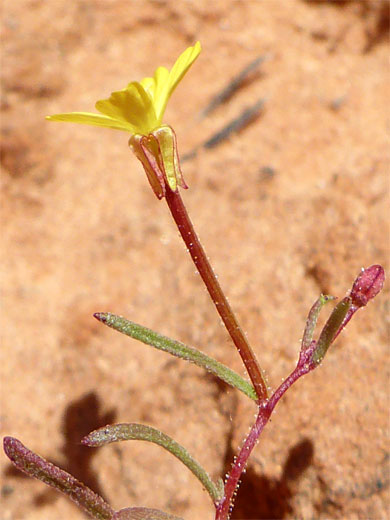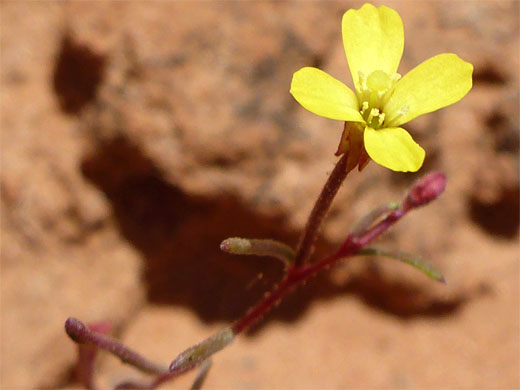Common name:
Lewis river suncup
Family:
Scientific name:
Camissonia parvula
Main flower color:
Range:
Scattered areas in most of the western states
Height:
Up to 12 inches
Habitat:
Sandy places, often with sagebrush, from near sea level to 8,500 feet
Leaves:
Linear, narrow, entire, untoothed, up to 1.1 inches long
Season:
April to June
Camissonia parvula is found in all states west of the Rocky Mountains, in scattered areas; it is most widespread in the Owens Valley region of California, around the Utah/Arizona border, across the Great Basin, and in northeast Utah.
Stems, leaves and sepals may be essentially hairless, or have a sparse covering of short, strigose hairs. Stems and the ovarian tube additionally, usually, have a sparse covering of glandular hairs. Stems are thin, wiry, reddish. Leaves are found only along the stem, not at the base.
Petals are all yellow, lacking any red spots, and wither to red. The sepals are unfused, and all become fully reflexed. Sepals are shorter than the petals. The spherical stigma is held at about the same height as the yellow anthers.
Stems, leaves and sepals may be essentially hairless, or have a sparse covering of short, strigose hairs. Stems and the ovarian tube additionally, usually, have a sparse covering of glandular hairs. Stems are thin, wiry, reddish. Leaves are found only along the stem, not at the base.
Petals are all yellow, lacking any red spots, and wither to red. The sepals are unfused, and all become fully reflexed. Sepals are shorter than the petals. The spherical stigma is held at about the same height as the yellow anthers.
All Contents © Copyright The American Southwest | Comments and Questions | Contribute | Site Map


